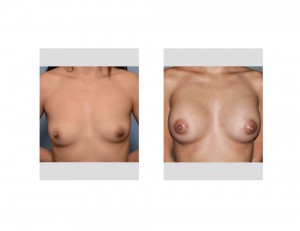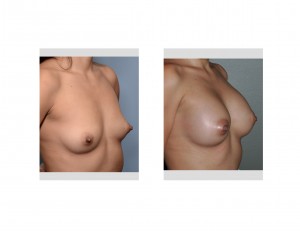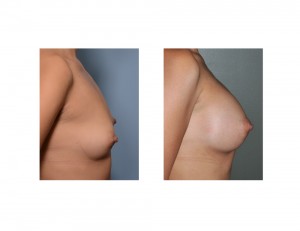Background: Breast augmentation continues to be popular amongst women of all ages and ethnicities. Amongst certain female patients that have more pigment in their skin, the risk of hypertrophic scarring or hyperpigmentation of the surrounding skin is a legitimate patient concern that may mar an otherwise excellent breast size enhancement.
In the Hispanic female, their intermediate skin pigment raises these scarring concerns. While I have done many Hispanic breast augmentations through the more ‘visible’ inframammary incision, most do not develop any adverse scarring. But the possibility exists and no one can predict whether any Hispanic women will develop an aesthetic scar issue or not from breast augmentation surgery.
Breast implants are well known to be capable of being inserted through a remote incision off the breast, of which the most common is the armpit or transaxillary incision. This is most commonly done using saline implants which are inserted in a folded fashion and filled with saline after insertion through a filler tube. Historically silicone implants have not been placed through the armpit due to insertion difficulties with a fully filled implant.
Case Study: This 26 year-old Hispanic female male wanted breast enlargement using silicone implants. She did not want any visible insertion scars and wanted to lessen teh space between her breasts. (sternal gap) While a ‘non-scar’ approach could be used to place her implants, it was pointed out that the wide spacing between her breasts could not be significantly reduced.

Recovery after her breast augmentation surgery was fairly quick due to a rapid recovery exercise program. Within ten days she was back to all activities including exercise and running. (albeit lightly) Her result showed symmetric implant placement, her desired size, lack of sternal gap reduction (as was counseled before surgery) and excellent appearing axillary scars.
Case Highlights:
1) Breast augmentation in Hispanic females can raise the concern of visible scarring if an inframammary or periareolar incisional approach is used.
2) To avoid a visible scar, a transaxillary approach for even silicone breast implants can be used.
3) Silicone breast implants can be placed through the armpit which is significantly aided through the use of a funnel device technique.
Dr. Barry Eppley
Indianapolis, Indiana




